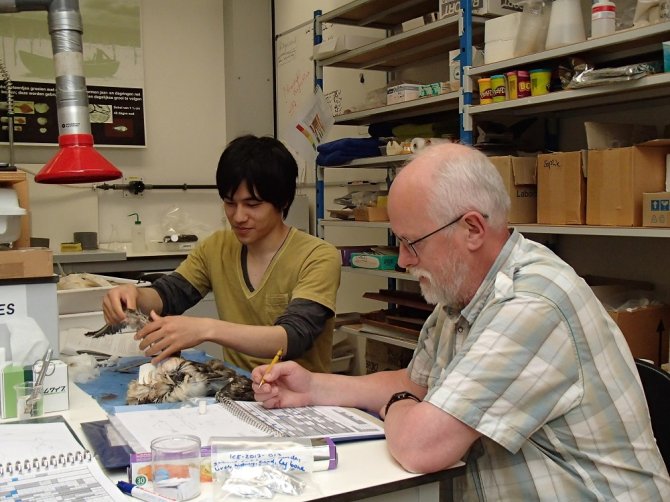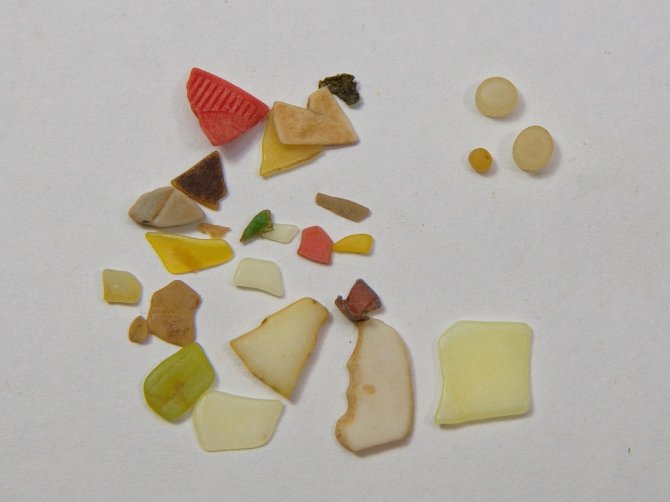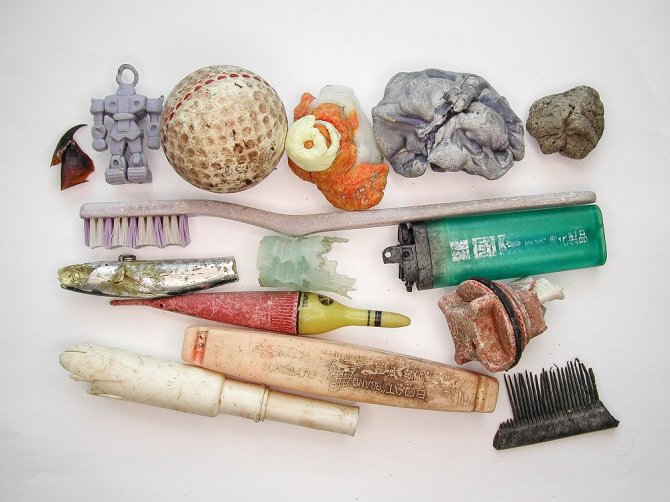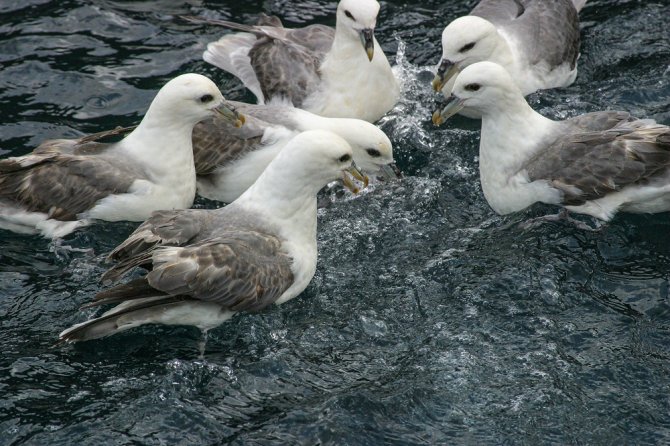News
Chemicals from ingested plastics
Chemical risks to marine life from ingested plastics are extremely difficult to quantify. Wageningen Marine Research cooperates with Japanese scientists in order to address this problem.
Adsorbed pollutants
There is considerable discussion on chemical risks related to the ingestion of plastic by marine wildlife. Unfortunately much of the information has focused on the chemical pollution in marine waters that is adsorbed onto the surface layer of plastics. In the water, plastics act as a sort of sponge for pollutants. Frequently, in comparison to pollutants ingested through the normal food chain, the added risk from such adsorbed pollutants is considered relatively unimportant.

Kosuke Tanaka and Jan van Franeker collect plastics from fulmar stomachs at the lab of Wageningen Marine Research
Built-in additives
Plastics however, contain a broad range of built-in additives like fillers, stabilizers, anti-oxidants, UV-protectors, colorants, softeners, flame-retardants etc. Many of these substances may represent health risks if they leach out of the ingested plastic and are taken up by the organism. Such risks are especially relevant to seabird species like fulmars and albatrosses which are known to regularly ingest considerable quantities of plastic debris. Unfortunately it is extremely complicated to study the actual presence of such additives in fragmented and degrading marine plastic litter and their leaching into the digestive system of seabirds.

Plastics from the stomach of a fulmar: chemicals from seawater tend adsorb onto the surface, but built-in additives are likely more relevant.
Study of marine debris particles
In a survey of potentially harmful additives from marine plastic debris ingested by seabirds, 159 particles from stomachs of Northern Fulmars from the Faroe Islands and 35 particles from Pacific albatrosses were subjected to detailed chemically analyses. Four kinds of UV stabilizers and 2 brominated flame retardants were detected at frequencies of 4.6% and 2.1%, respectively.

Plastics from stomachs of Laysan albatross: size of ingested plastics relate to the size of the bird species.
Risk
For seabirds like fulmars, in which almost all individuals have plastic in the stomach in an average number of often tens of particles which continuously are broken down and are constantly replaced by new particles, this means a continuous risk. In an earlier study with shearwaters, flame retardants from ingested plastics were indeed shown to be transferred to the birds tissues.

Fulmars fanatically feeding are not so picky to what they ingest.